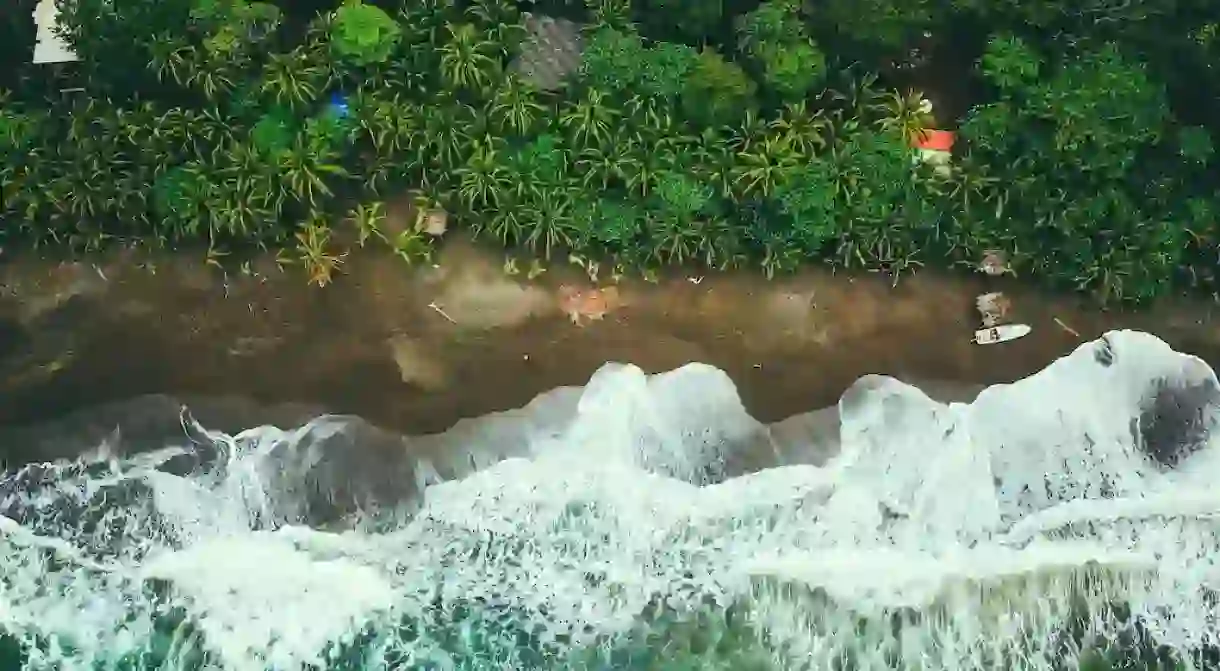Why the Best of Panama Is Found Beyond Panama City

Panama‘s treasures aren’t just limited to Panama City – they extend far beyond, deep into the waters and the jungle. The thousands of islands, unique wildlife, coffee plantations and unexplored rainforest of the Darién are just some of its delights waiting to be uncovered. Here’s why the best of Panama is found beyond its capital city.
It’s a hub of biodiversity
Panama is a biological corridor between the Americas, which emerged from the ocean over 3 million years ago thanks to volcanic activity. Predominantly covered in humid rainforest, Panama is home to some of the most diverse animal and plant species of the planet. Other types of vegetation include cloud forest on the highlands, mountain vegetation on the highest summits, mangroves on both the Pacific and the Atlantic coasts. Overall, the flora is thought to contain over 10,000 species, whereas the fauna counts 255 mammal species and 972 indigenous bird species, according to the National Society for the Protection of Nature of Panama.

There are dreamy islands galore
Panama is a unique destination for all those travellers who love to wander off the beaten track. With over a thousand islands, some of them unnamed and unexplored, Panama is perfect for sailing, snorkelling, diving, or more simply enjoying postcard-like Caribbean desert beaches. Closer to the city, on the Pacific side of the country, is the Pearl Archipelago, a sought-after destination for high-end travellers. The more adventurous will want to explore San Blas, on the Atlantic Coast, made up of approximately 300 islands, which is also home to the Guna Yala indigenous people. Coiba Island, in the Gulf of Chiriquí on the Pacific Coast, is part of a National Park known for its diverse marine life and jungle animals, whales, manta rays and hammerhead sharks. Bocas del Toro, on the Caribbean side close to Costa Rica, in a staggering archipelago and the favourite destination for surfers.

It’s home to exotic wildlife
With jaguars, armadillos, eagles, bats and poisonous frogs prowling the jungles and waters of Panama, the country is quite literally a wild land. Few places on earth offer this kind of biodiversity and bird-watchers consider it one of the world’s best birding sights. From Cana, in the National Park of Darién, you will be able to spot golden-headed quetzals, macaws, amazons, parrots and toucans. Offshore waters and reefs on both sides of the country feature tropical fish, sharks, killer whales as well as five out of the seven existing species of sea turtles. With some luck and patience you may spot one many monkeys species in the jungle ,though encountering one of the big cats, predominantly pumas, only happens on very rare occasions.

The best coffee plantations in the world are here
Grown in the volcanic soil close to the Barú Volcano, in the Province of Chiriquí, Panamanian coffee develops a unique aroma thanks to the tropical highland climate that creates a perfect balance of humidity and sun. So if you want to sip coffee right from its source, go to Boquete and visit some of the best coffee plantations in the world. Being a small country, with tiny productions, Panama has many advantages. The farming methods are innovative, experimental, and farmers are open to implementing new ideas to constantly improve the output of their production. Farms are worked by hand meaning that traditional knowledge is still a unique and precious value. The geisha variety, also known as the ‘champagne of coffees‘is one of the most prestigious types of coffee beans in the world.

It’s a surfing paradise
Unlike other parts of Central America, Panama is still a virgin land when it comes to surfing. Less visited than Costa Rica and safer than El Salvador, you will find you have lots of space to yourself along half-desert beaches on both the Pacific and Caribbean side of the country. The islands of Bocas del Toro, in particular Red Frog Beach on Basitmentos Island, offer a wide variety of surf breaks and can be reached by plane, departing from the small airport of Albrook in Panama City, or by road if you are up for a road trip across the country. The best times to visit the Carribbean coast are December to March. The Pacific Coast is more accessible all year round, along the beaches of Pedasí and in the famous surfers paradise of Playa Venao, where you won’t only find the perfect wave but also the perfect beach party.














